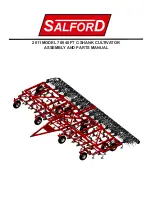
45
RLC-SVX023B-GB
Maintenance Procedures
Refrigerant Charge
If a low refrigerant charge is suspected, fi rst determine the cause of lost refrigerant. Once the problem is repaired
follow the procedures below for evacuating and charging the unit.
Refrigerant recovery
1.
Insure that the water fl ow is maintained on condenser and evaporator during all the recovery operation.
2. Connections on evaporator and condenser are available to remove the refrigerant. Weigh the refrigerant
removed.
CAUTION !
Never recover refrigerant without maintaining nominal water fl ow on heat exchangers during all the recovery
operation. Evaporator or condenser could freeze and bringing severe damages to the unit.
3. Use a “refrigerant transfer machine” and adequate service cylinders to stock the recovered refrigerant.
4
. According to its quality, use recovered refrigerant to charge the unit or give it to refrigerant producer for
recycling or elimination.
Evacuation and Dehydration
1.
Disconnect ALL power before/during evacuation.
2. Connect the vacuum pump to the ½’’ service valves on the oil separator and on the liquid line.
3. To remove all of the moisture from the system and to insure a leak free unit, pull the system down below
500 microns.
4. After the unit is evacuated, perform a standing rise test for at least an hour. The pressure should not rise more
than 150 microns. If the pressures rises more than 150 microns, either a leak is present or moisture still in the
system.
NOTE:
If oil is in the system, this test is more diffi cult. The oil is aromatic and will give off vapors that will raise
the pressure of the system.
Refrigerant Charging
Once the system is deemed leak and moisture free, use the ½’’ service valves at the top of the oil separator and on
the liquid line, after the expansion valve. Refer to Table 1 and unit nameplate for refrigerant charge information.




































